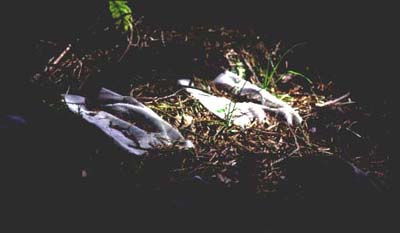
|
|
Aims
Decomposition of organic material and the subsequent liberation of nutrients that become available to plants is a key process in the ecosystem. It is also a process in which a great part of the assimilated carbon is released to the atmosphere. Disturbance of this process, e.g. by heavy metals, may have great consequences both for the nutrient availability to the plants and the content of CO2 in the air. One reason for this is the extensive forest area in both Sweden and the world as a whole. Microbial decomposition is followed by placing standard pine needle litter inside nylon bags on the forest floor on the intensive soil plot. After one, two and three years respectively the bags are collected and the needles weighed. Loss of dry weight is calculated. The procedure is repeated annually. The soil respiration in humus is measured by titrating an NaOH solution that has been exposed to the sample in a closed vessel under standardised conditions. From an intensive plot 36 samples are taken from the upper biologically relatively active part of the humus layer (the OF -layer). The result is compared with respiration from humus enriched experimentally with heavy metals.
Variables
|
 |
|